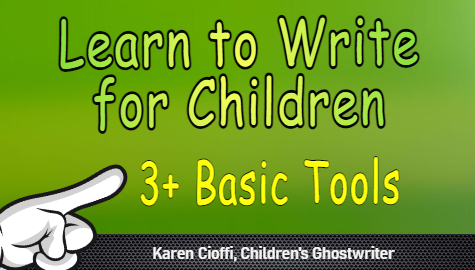We all know how difficult it is to break into the business of writing for children. Whether you write fiction or nonfiction, it is a tough business and can be overwhelming for those just starting out. While all writing must adhere to specific guidelines, writing for children has additional principles unique to its genre.
To start, the words used in children’s writing must be age-appropriate. This may sound easy to do, but it can be a difficult task. There are also specific techniques and tricks explicitly used in writing for children, such as the Core of Three, sentence structure, and the timeframe in which the story should occur when writing for young children. In addition, it’s essential to make sure your conflicts, storyline, and point of view are appropriate for the age group you’re writing for.
Along with this, there are general techniques for writing, such as adding sensory details, showing instead of telling, and creating an engaging story that hooks the reader right away, along with great dialogue and correct punctuation.
This is just the beginning, though. There is also the business of editing your work, the book summary, writing a winning query, and following submission guidelines; the list goes on and on.
But don’t get discouraged: there is help.
Here are four (yes, I added a fourth) basic tools to get you started and guide you down the children’s writing path:
1. Children’s Writer’s WORD BOOK by Alijandra Mogilner is an excellent resource that provides word lists grouped by grades along with a thesaurus of listed words. This allows you to check a word in question to make sure it is appropriate for the age group you’re writing for. It also provides reading levels for synonyms. It’s a very useful tool and one that I use over and over.
2. Read and take courses (online and offline) to help you learn how to write for children. There are plenty of books and courses you can find online that will help you become a ‘good’ children’s writer.
A valuable resource to learn the craft of writing for children is the Society of Children’s Book Writers (SCBWI) and Illustrators. They have outstanding workshops. I’ve attended a few in-person and a few online.
In addition, they have a helpful forum with experienced writers who are happy to help other writers. There’s an annual fee, but it’s worth every penny.
There’s also the Highlights Foundation. They also offer workshops.
You can also check out my book, How to Write A Children’s Fiction Book. It’s 200+ pages of instruction, tips, advice, examples, and more.
I also offer it in an e-course format: Fiction Writing for Children (a guided self-study and mentoring program).
3. The Frugal Editor, by award-winning author and editor Carolyn Howard-Johnson, is a valuable book for any writing genre, including children’s. It guides you through basic editing and getting the most out of your Word program’s features. It also provides query samples and so much more. The author offers tips and advice that will have you saying, “Ah, so that’s how it’s done.”
4. Grammarly and ProWritingAid are two editing tools that I use. I started using them a while ago and LOVE them. They do have a yearly fee, but they’re worth the cost. I use them for my work (including my articles) and clients’ work.
I’ve invested in many books, courses, and programs in writing and marketing and know value when I see it. These products have great value for you as a writer; if your budget allows, they are definitely worthwhile writing tools.
These four resources are essential tools in my children’s writing toolbox. However, the crucial aspect of creating a writing career is to actually begin.
Remember, you can’t succeed if you don’t try. It takes that first step to start your journey; for many, that first step is a huge stumbling block. Don’t let procrastination or fear stop you from moving forward – get your children’s story started today!
MORE ON CHILDREN’S WRITING
Ingredients for a Perfect Picture Book
Book Marketing and the Query Letter
What Makes a Good Story? Plot Driven vs. Character Driven

I’m a working children’s ghostwriter, rewriter, editor, and coach. I can help turn your story into a book you’ll be proud to be the author of, one that’s publishable and marketable.
OTHER HELP I OFFER:
HOW TO WRITE A CHILDREN’S FICTION BOOK
A DIY book to help you write your own children’s book.
FICTION WRITING FOR CHILDREN eCOURSE
4-Weeks / 8 Sections Guided Self-Study Mentoring Program
You can contact me at: kcioffiventrice@gmail.com. Or give me a call at 347—834—6700. (Please leave a message- I’ll get back to you as soon as I can.)


3 thoughts on “Learn to Write for Children – 3 Basic Tools”